Tres Leches Cake with Dulce de Leche Glaze
This post may contain affiliate links. Read my full disclosure policy.
A stunning tres leches cake with a rum-spiked dulce de leche glaze.
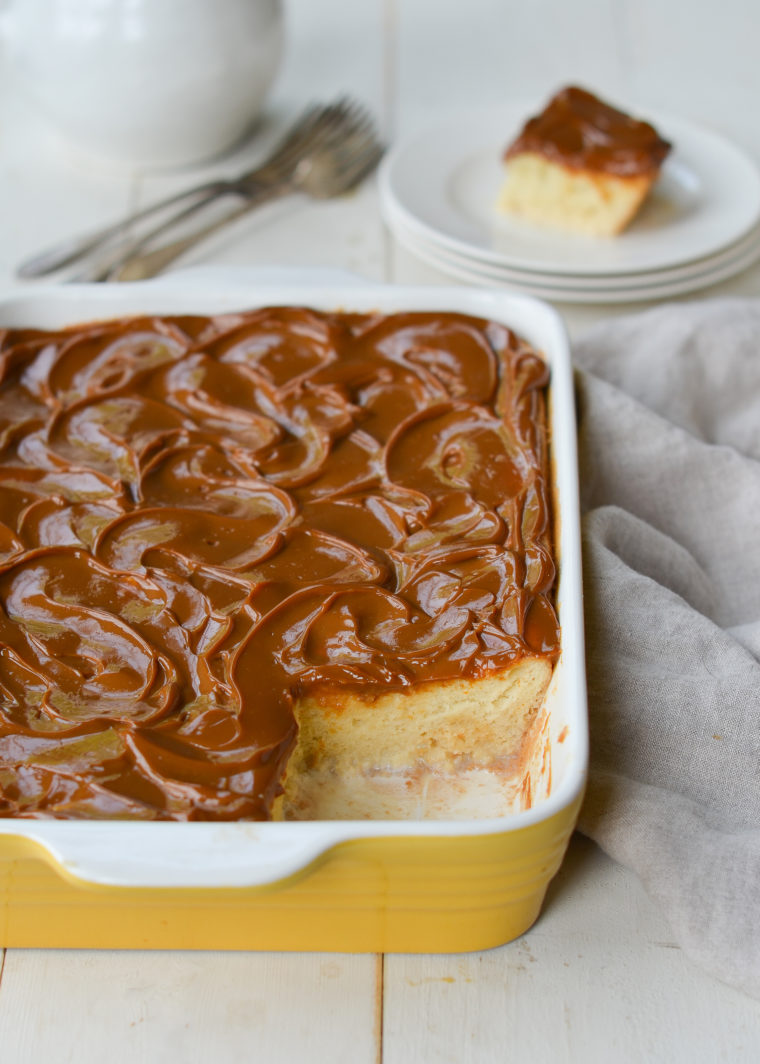
Popular in Latin America, tres leches cake or pastel de tres leches is a light and fluffy cake soaked with a mixture of three milks: sweetened condensed milk, evaporated milk, and heavy cream (leche means milk in Spanish). It’s a homey cake served right from the baking pan and it has a consistency similar to bread pudding or custard.
In this version, rum is added to the soaking liquid and, instead of the traditional whipped cream topping, a simple rum-spiked dulce de leche glaze covers the cake (which, I guess, technically makes it a quatro leches cake). My husband calls it “heaven on earth.”
What You’ll Need to Make Tres Leches Cake
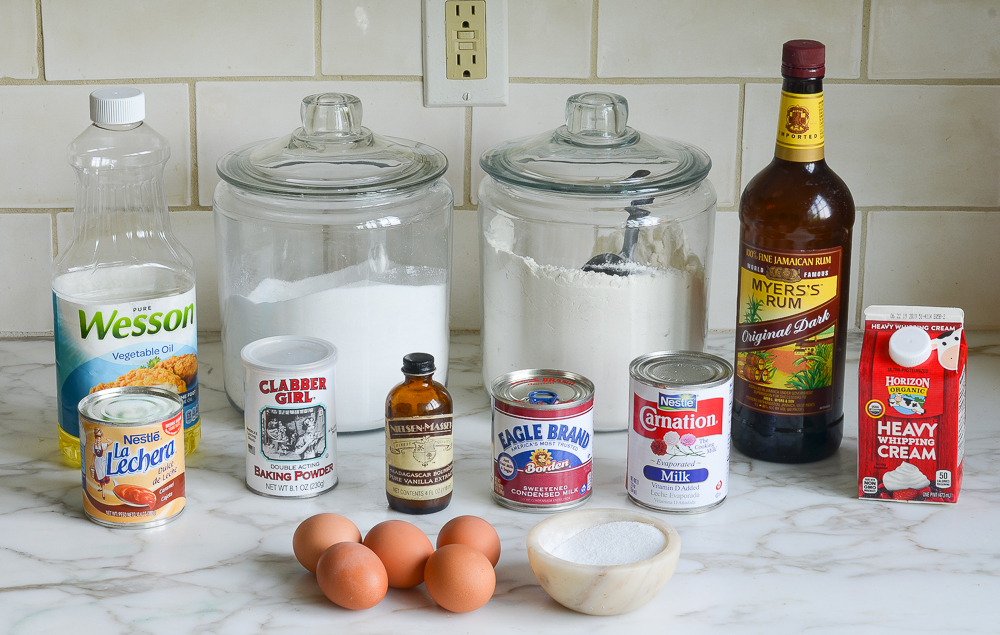
Before we get to the recipe, can I just tell you how many tres leches cakes I baked before arriving at this version? Eight! Finally, I found a recipe by pastry chef Nick Malgieri that was a spot-on. The key to his recipe? Using a chiffon batter for the base and cooling the cake upside-down. I jazzed up the recipe by adding rum and dulce de leche.
How To Make Tres Leches Cake
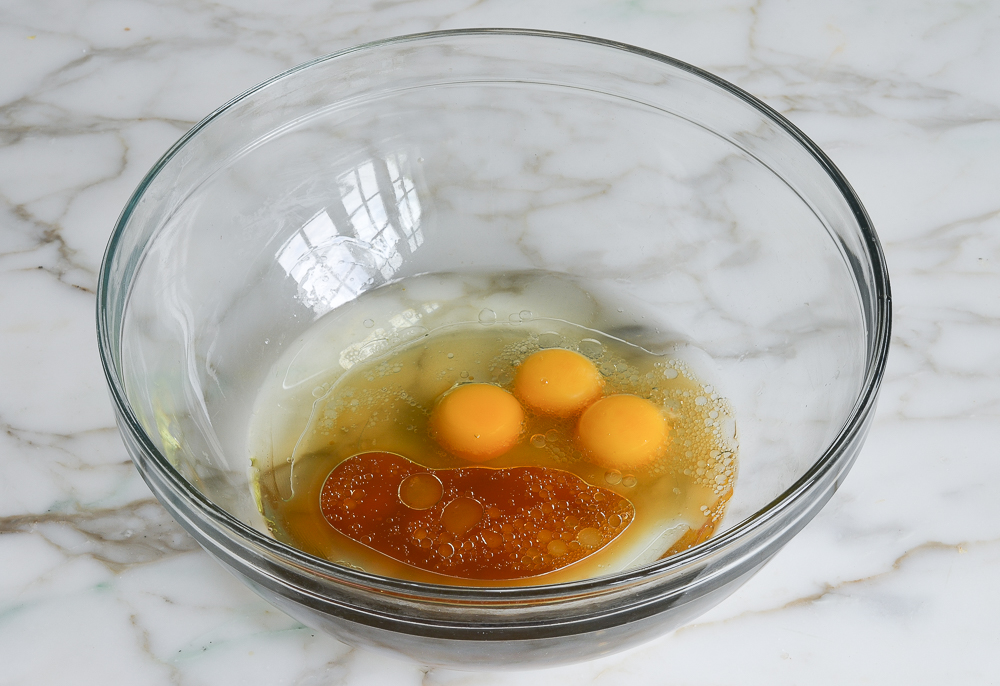
Begin by combining the egg yolks, oil, water and vanilla in a mixing bowl. Whisk to blend.
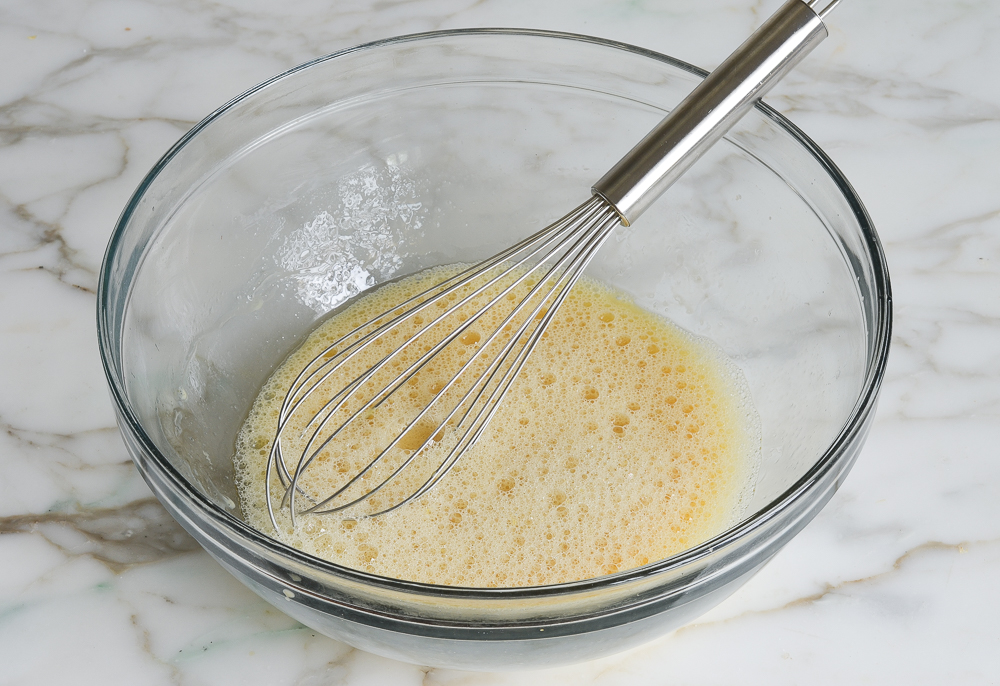
In another bowl, whisk together the flour, part of the sugar, and the baking powder.
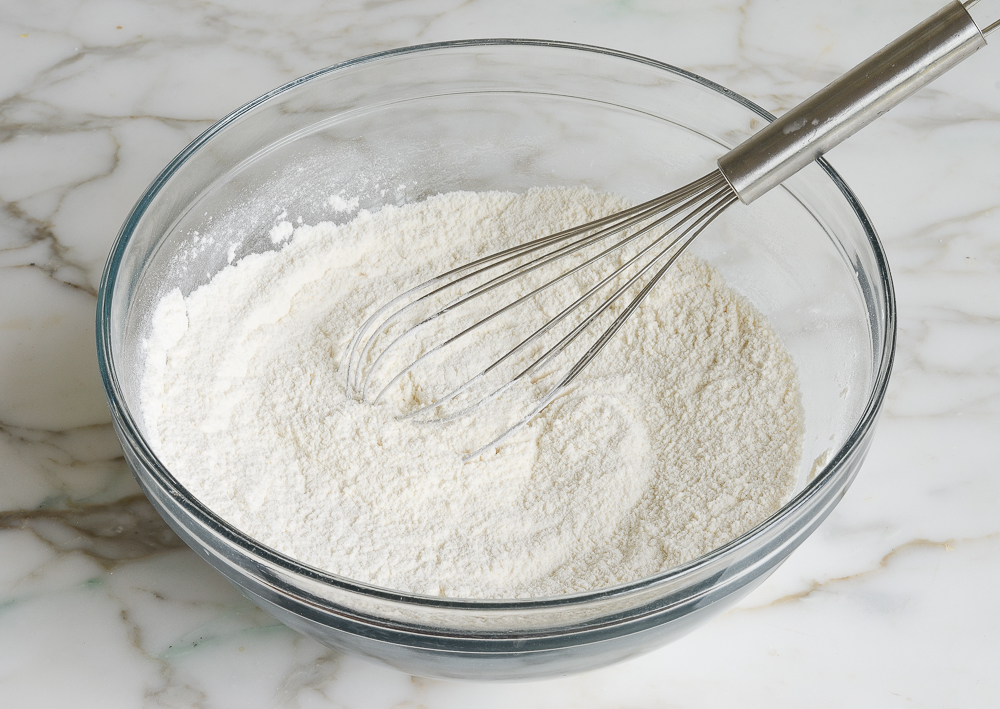
Add the egg mixture to the flour mixture.
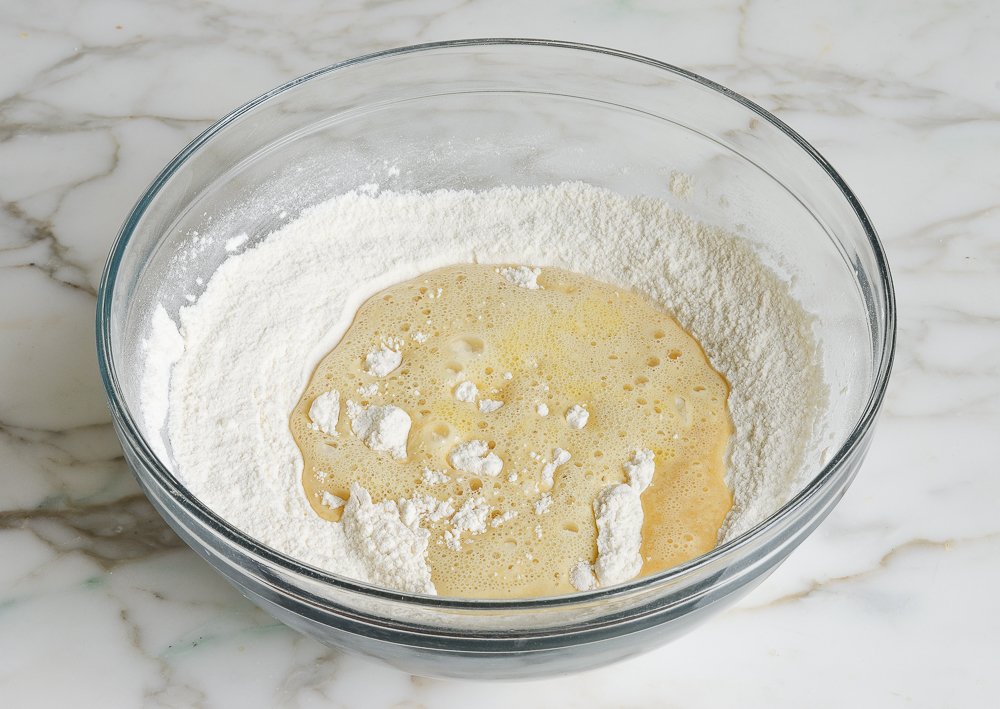
Using an electric mixer, beat for one minute to aerate. Set aside.
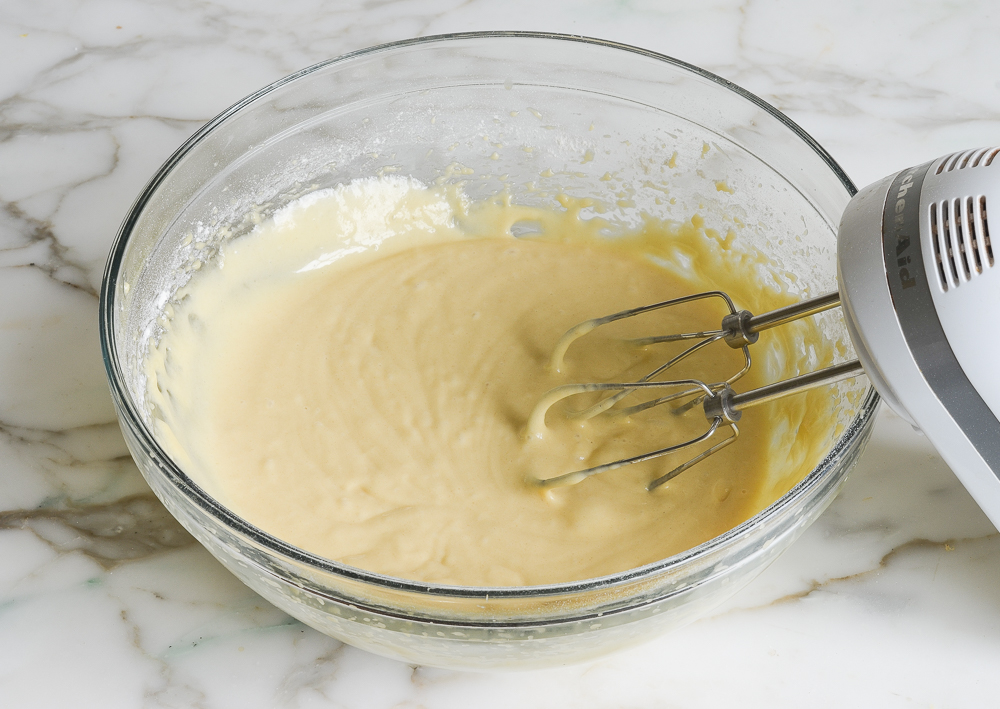
Next, combine the egg whites and salt in a clean, dry bowl and beat until foamy and soft peaks form (when you lift the beaters or whisk out of the bowl, the peaks will hold for a second and then melt back into themselves).
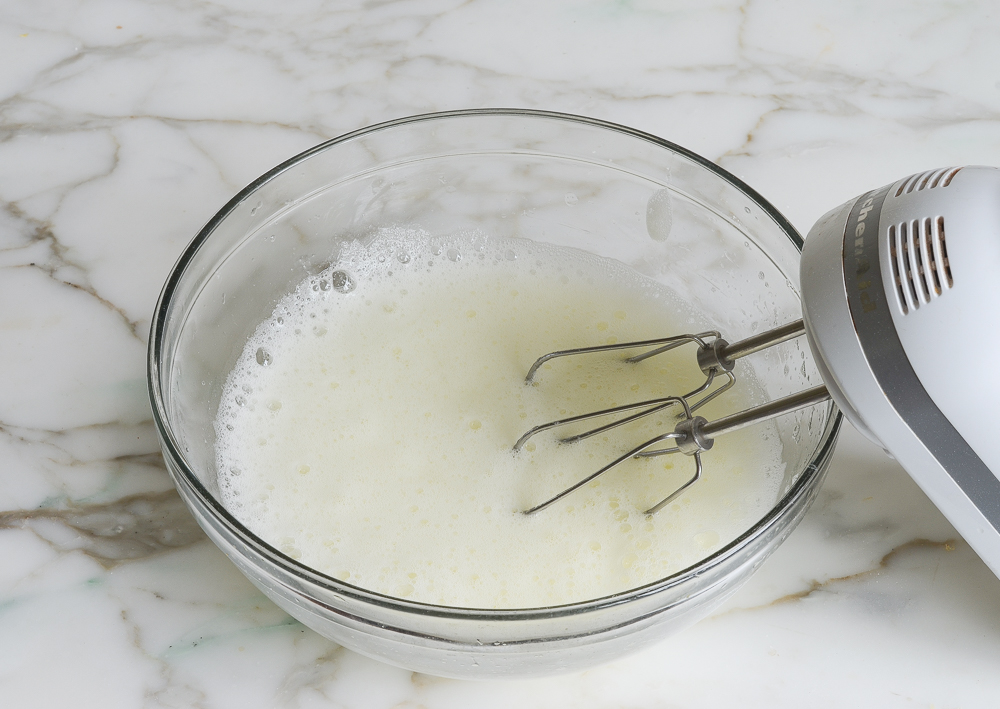 Add the remaining sugar in a steady stream and beat the mixture until stiff peaks form. As you can see below, the mixture will be glossy, and when you lift the beaters or whisk out of the bowl, the peaks will point straight up with just a tiny droop at the top.
Add the remaining sugar in a steady stream and beat the mixture until stiff peaks form. As you can see below, the mixture will be glossy, and when you lift the beaters or whisk out of the bowl, the peaks will point straight up with just a tiny droop at the top.
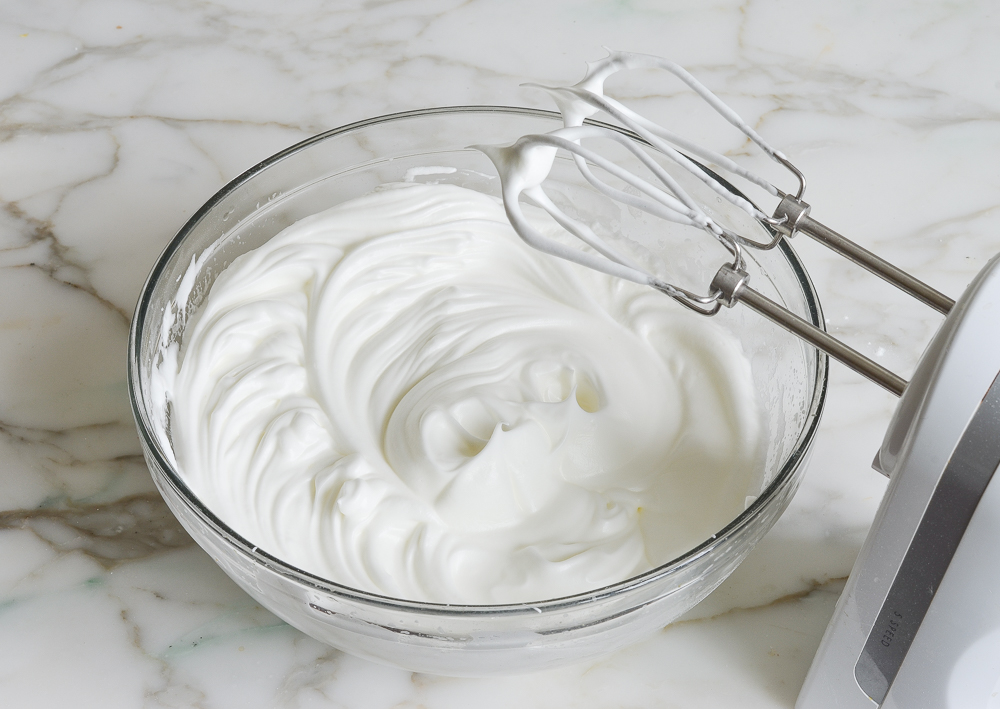
Add the a quarter of the egg whites to the batter and stir to combine — this lightens the mixture making it easier to fold in the remaining egg whites.
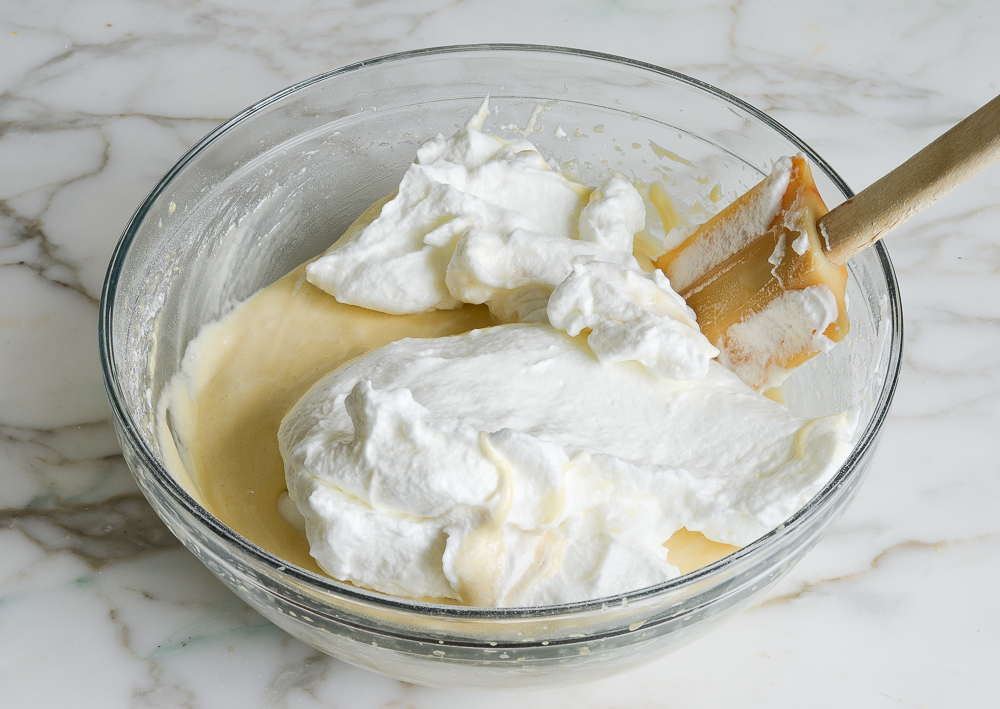 Fold in the remaining egg whites — this is just a gentle mixing method that helps the batter retain the volume of the beaten egg whites. It’s easy: use a large rubber spatula to cut down vertically through the two mixtures, then gently turn half the mixture over onto the other half. Continue cutting down the middle and turning a portion over. Don’t stir. The egg whites should be fully incorporated but only just so — try not to over mix.
Fold in the remaining egg whites — this is just a gentle mixing method that helps the batter retain the volume of the beaten egg whites. It’s easy: use a large rubber spatula to cut down vertically through the two mixtures, then gently turn half the mixture over onto the other half. Continue cutting down the middle and turning a portion over. Don’t stir. The egg whites should be fully incorporated but only just so — try not to over mix.
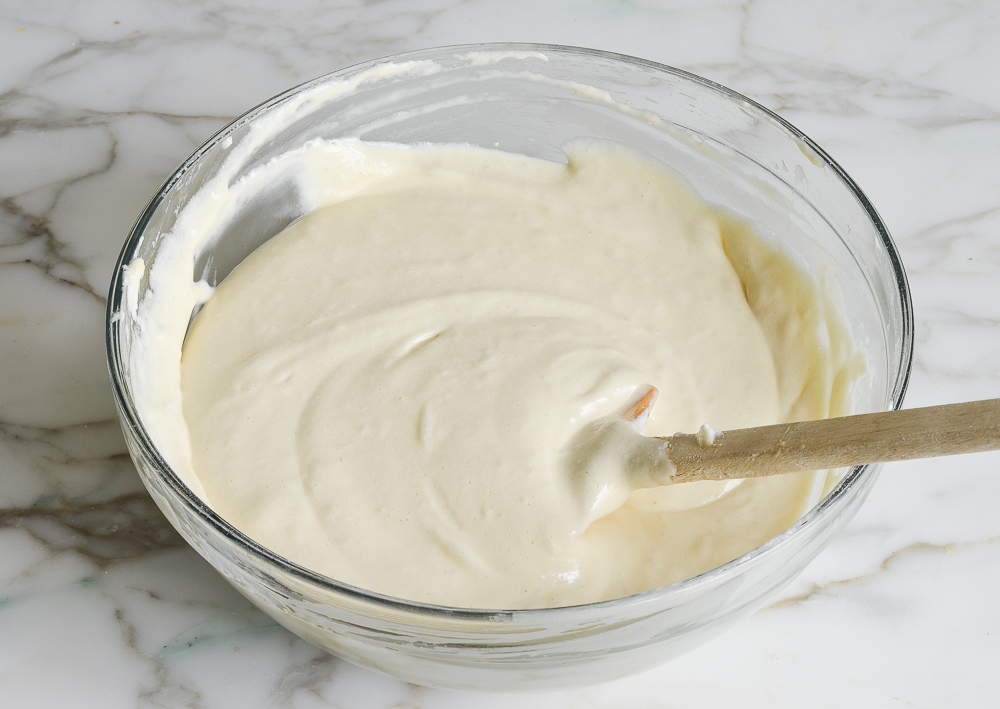
Transfer the batter to an ungreased 9 x 13 x 2-inch glass or ceramic baking dish (do not use metal). It’s very important not to grease the pan; a chiffon cake needs to grip the sides of the pan to rise. And the cake needs to stick to the pan since it cools upside-down.
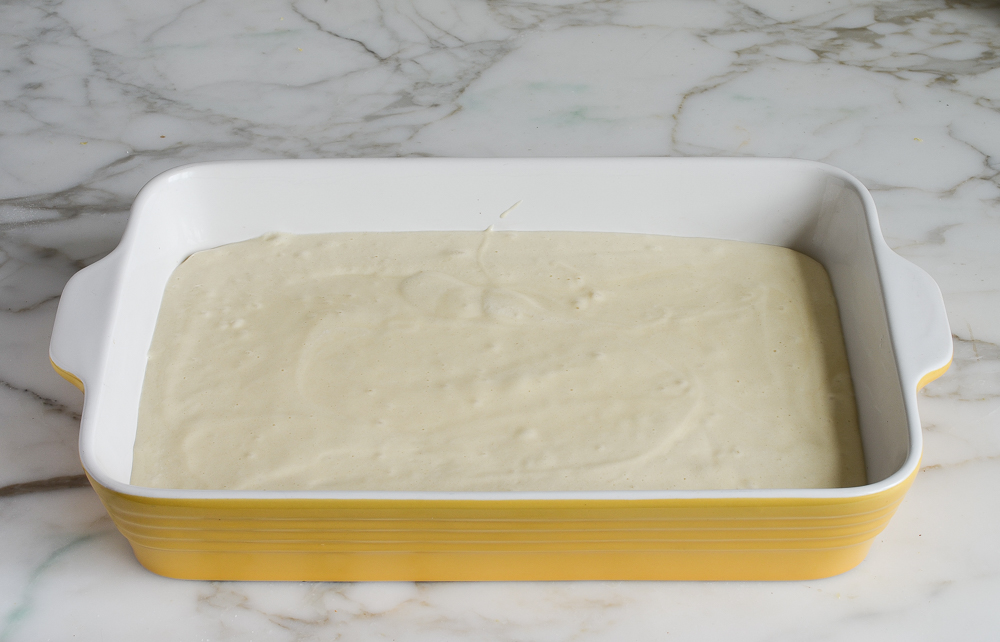
Bake for 45 to 50 minutes, until the cake is set and golden.
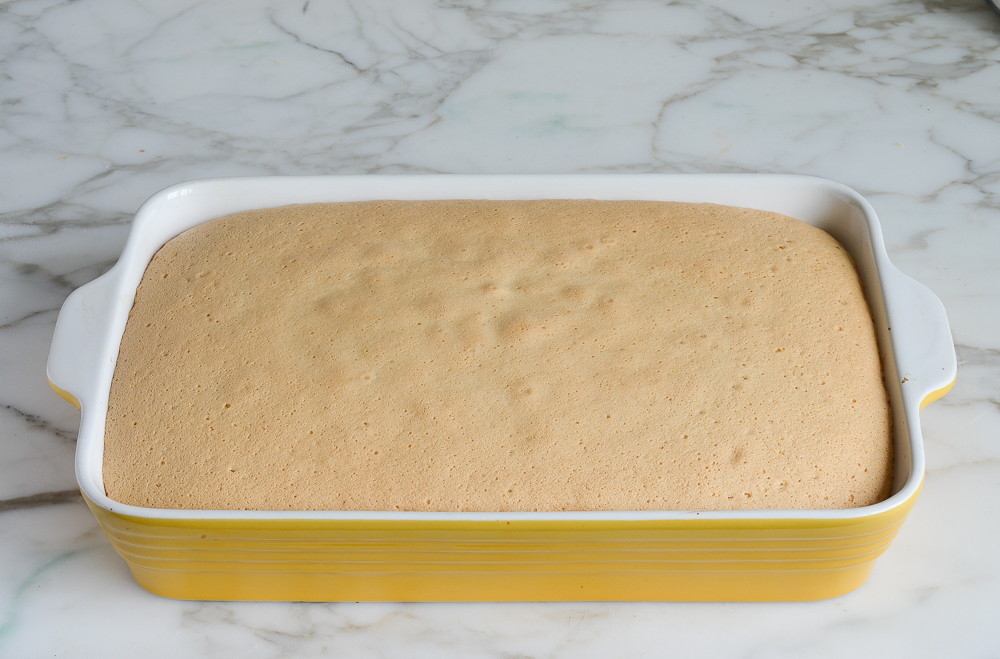
Let the cake settle for 1 to 2 minutes (you want it to deflate just a bit, so that the top of the cake is level with the rim of the baking dish). Invert 4 glasses onto the countertop and invert the cake pan onto them, positioning one in each corner of the pan. A chiffon cake needs to hang upside down to cool or it will collapse and fall.
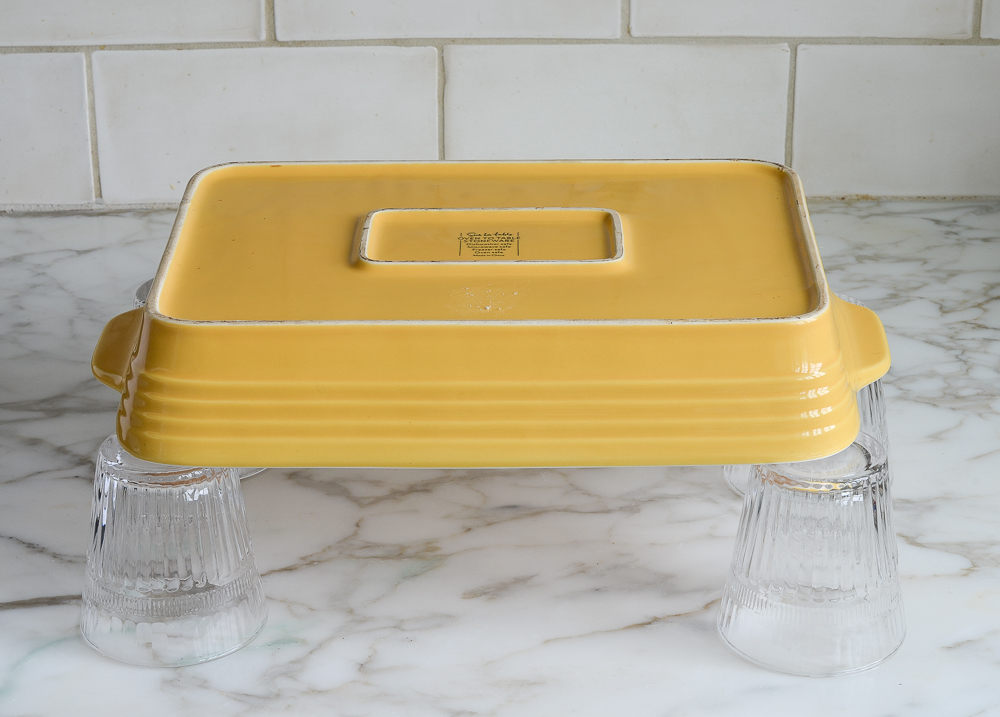
Let the cake cool for about an hour, then flip it over and run a sharp knife around the edges to loosen it from the pan. Poke it all over with a toothpick or skewer.
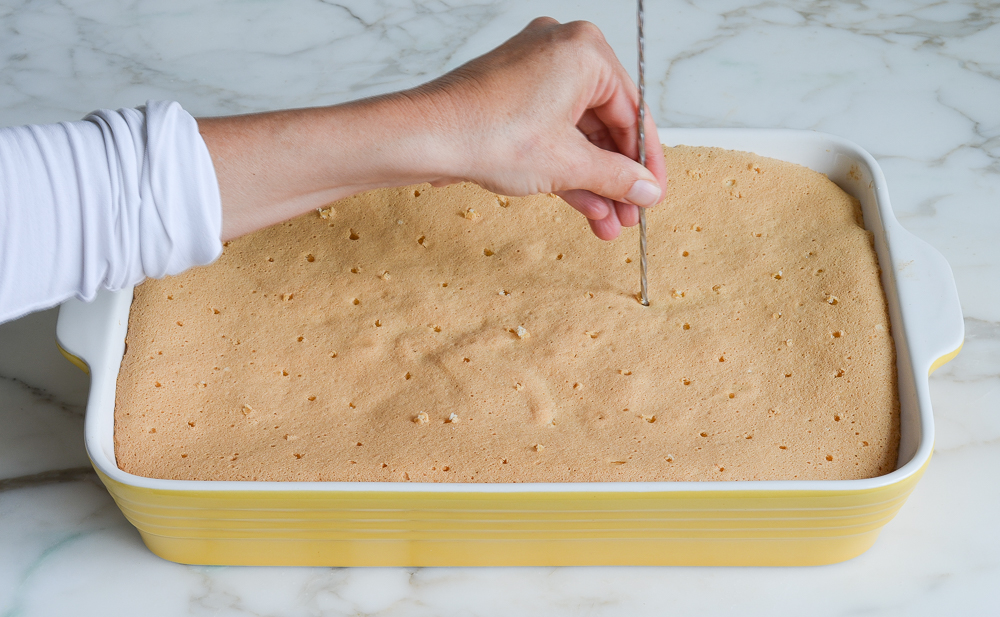
Make the tres leches soaking liquid by combining the evaporated milk, sweetened condensed milk, heavy cream, and rum.
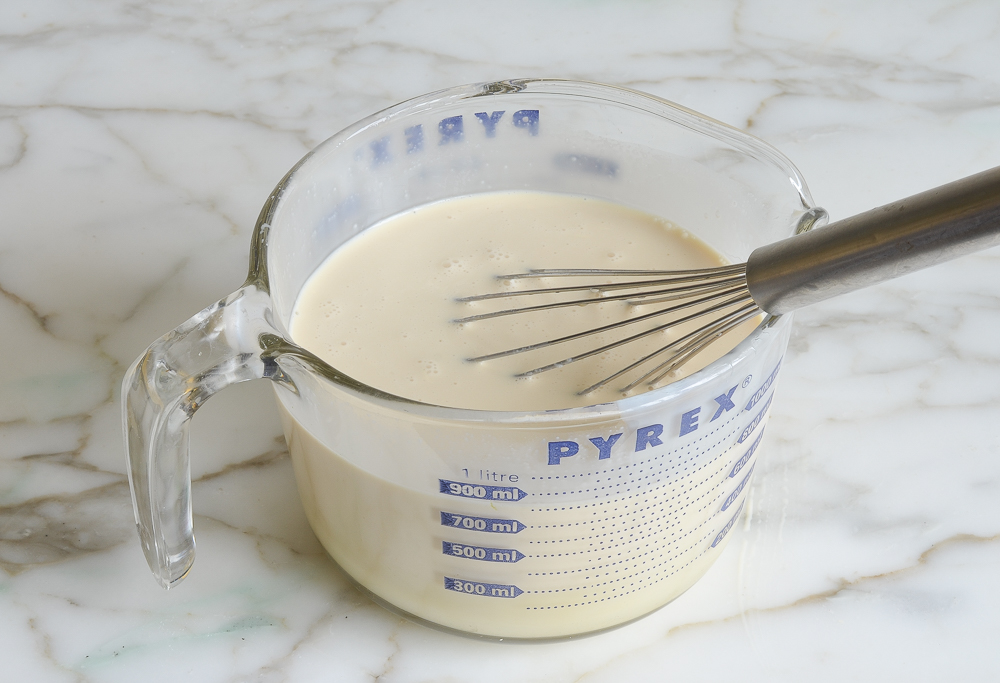
Pour it slowly over the cake, allowing the cake to absorb the moisture as you go. Don’t rush this process or the liquid won’t be absorbed evenly.
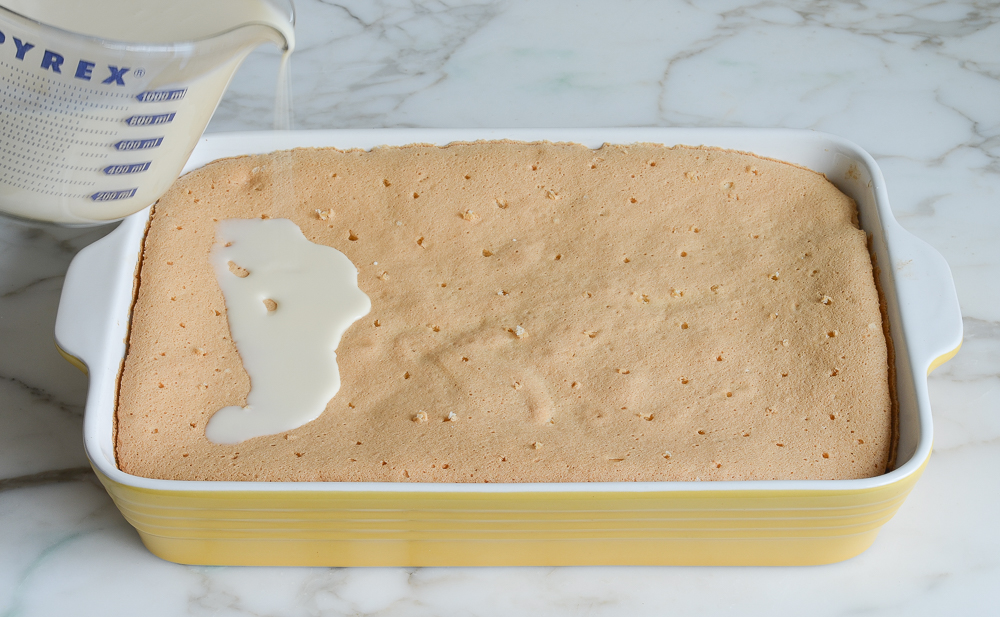
It’s helpful to tilt the pan slightly back and forth to help it absorb.
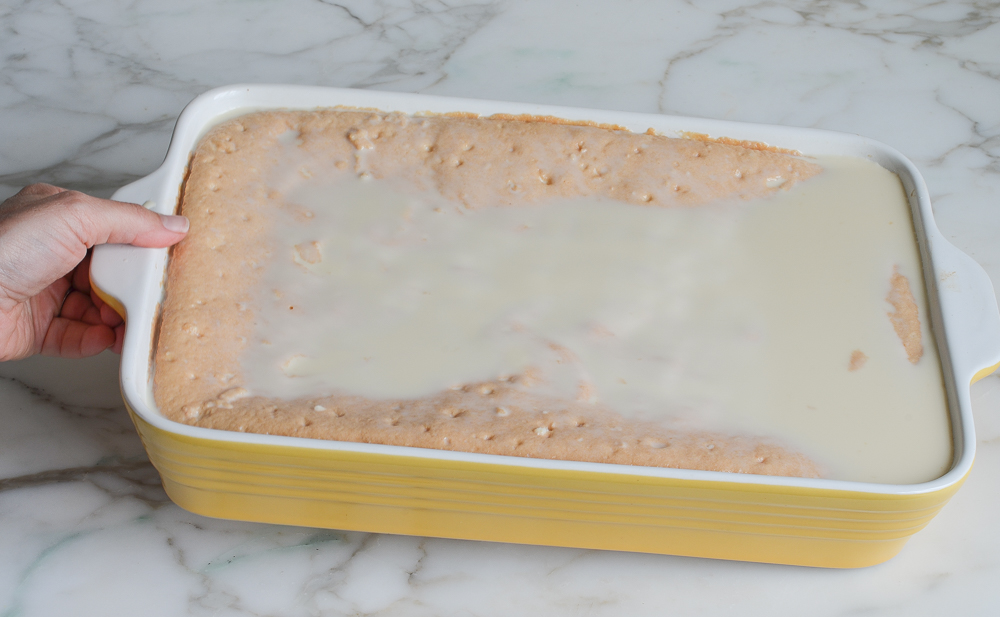 Refrigerate the cake for at least eight hours or overnight to allow it to fully absorb the tres leches mixture. Then, prepare the topping by combining the dulce de leche, rum, and water in a bowl. Microwave it for about one minute so it’s easier to blend.
Refrigerate the cake for at least eight hours or overnight to allow it to fully absorb the tres leches mixture. Then, prepare the topping by combining the dulce de leche, rum, and water in a bowl. Microwave it for about one minute so it’s easier to blend.
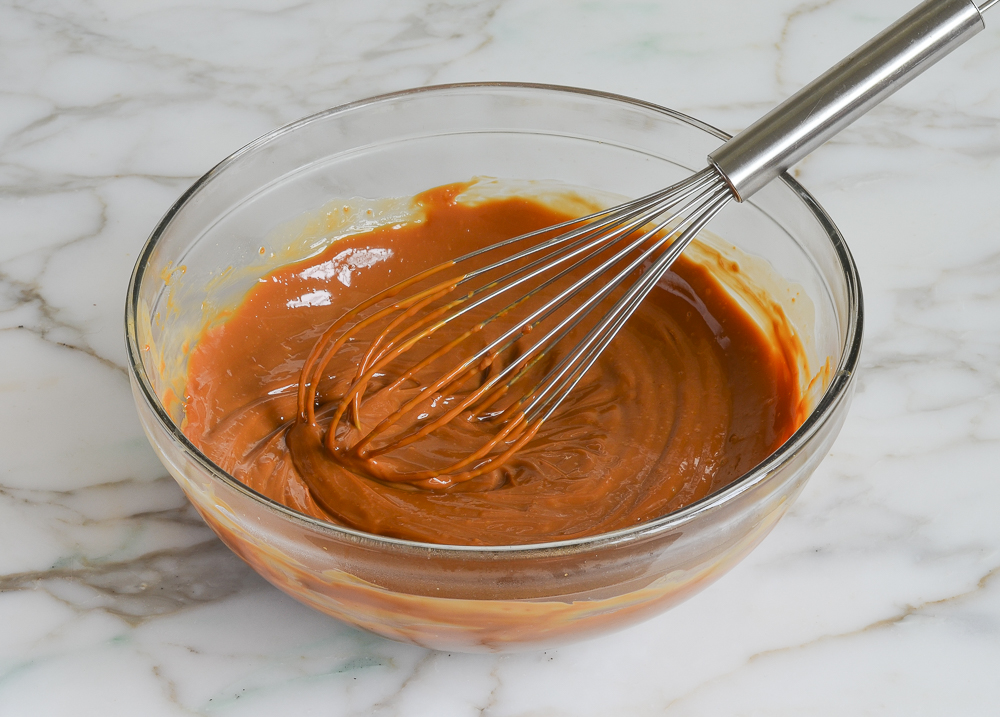
Spread the glaze over the chilled cake.
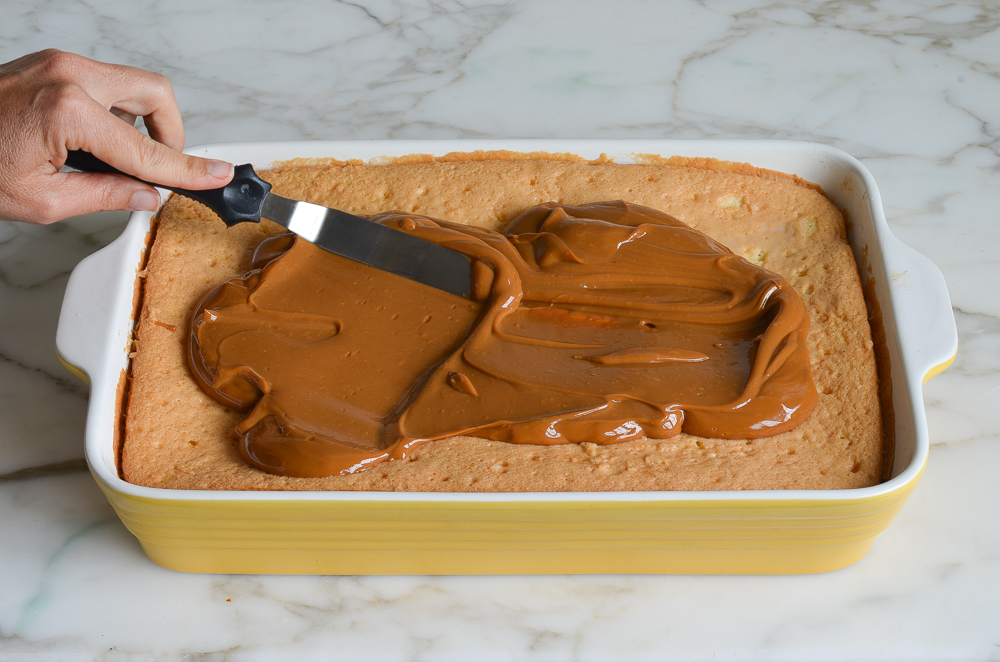
Make a pretty design by swirling the glaze with an offset spatula or butter knife.
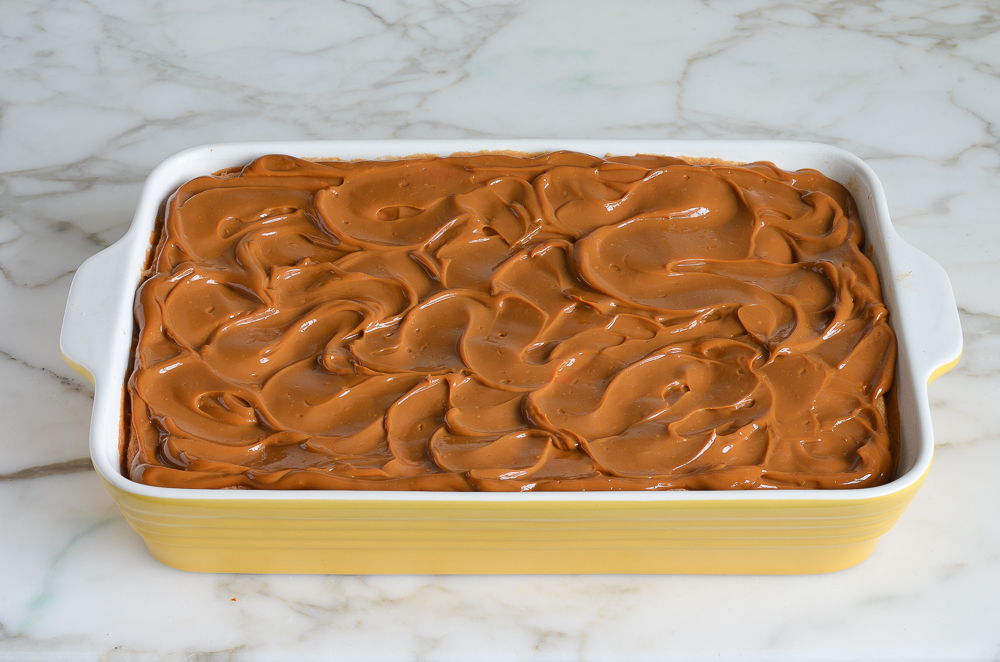 Chill the cake until ready to serve.
Chill the cake until ready to serve.
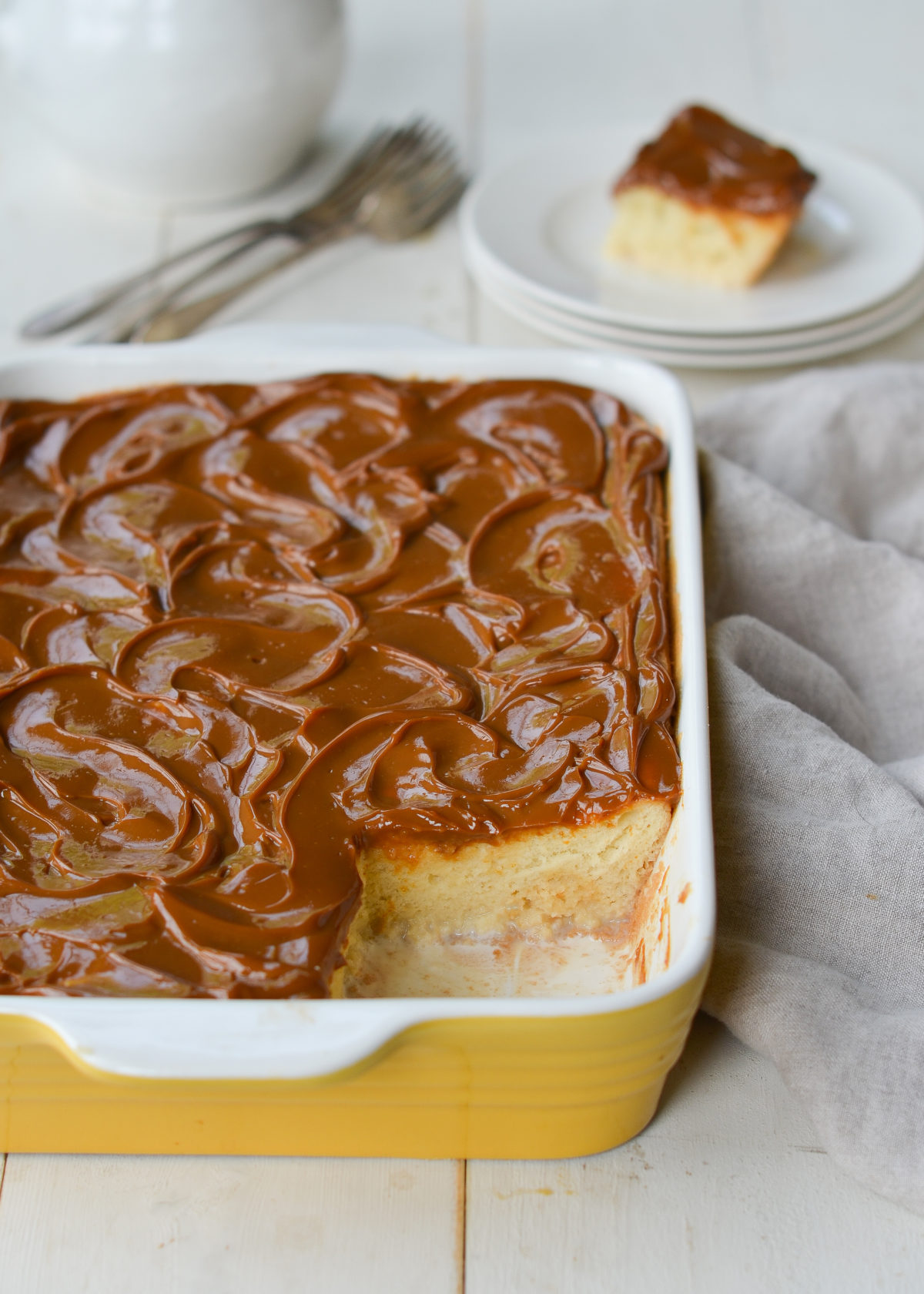
More Cool, Creamy Dessert Recipes
Tres Leches Cake with Dulce de Leche Glaze
A stunning tres leches cake with a rum-spiked dulce de leche glaze.
Ingredients
For the Cake
- 3 large egg yolks
- ⅓ cup vegetable oil
- ½ cup water
- 2 teaspoons vanilla extract
- 1½ cups all-purpose flour, spooned into measuring cup and leveled-off with a knife
- 1 cup sugar, divided
- 2 teaspoons baking powder
- 5 large egg whites
- ⅛ teaspoon salt
For the Soaking Mixture
- 1 (12-oz) can evaporated milk
- 1 (14-oz) can sweetened condensed milk
- ¼ cup plus 2 tablespoons heavy cream
- 3 tablespoons dark rum
For the Glaze
- 1 (13-oz) can dulce de leche, preferably Nestle
- 1 tablespoon dark rum
- ¼ cup water
Instructions
- Preheat the oven to 325°F and set a rack in the middle position.
- In a medium bowl, whisk together the egg yolks, oil, water and vanilla.
- In the bowl of an electric mixer fitted with the paddle attachment or beaters, combine the flour, ¾ cup of the sugar, and the baking powder; mix on low speed for 20 seconds to combine. Add the egg mixture to the flour mixture and beat (start slow to combine then increase to medium for stand mixer/medium-high for hand mixer) for one minute to aerate it slightly. Scrape down the sides of the bowl with a rubber spatula and beat for just a few seconds more. Set aside.
- In a clean, dry mixing bowl, combine the egg whites and salt. Using the whisk attachment or beaters, whip the egg whites (on medium speed for a stand mixer/medium-high speed for a hand mixer) until they are white, foamy, and beginning to hold a very soft peak, 40 to 60 seconds. Increase the speed (medium-high for stand mixer/high for hand mixer) and gradually add the remaining ¼ cup of sugar in a slow stream. Continue whipping the mixture until it is shiny and holds stiff peaks, 2 to 3 minutes.
- Using a large rubber spatula, add ¼ of the egg white mixture into the batter and mix thoroughly. Add the remaining egg whites to the lightened batter and gently fold until the batter is uniform. Do not over-mix. Scrape the batter into an ungreased 9x13-in glass or ceramic baking dish (do not use metal) and smooth the top (note that it's very important NOT to grease the pan). Bake the cake for 45 to 50 minutes, or until it is set and golden.
- Let the cake sit on the stovetop for 1 to 2 minutes, until the cake settles (you want it to deflate just slightly, so that the top of the cake is level with rim of the pan), then invert four glasses onto the countertop and invert the cake pan onto them, positioning one in each corner of the pan. (A chiffon cake needs to hang upside down to cool or it will collapse and fall.) Let cool for 1 hour.
- Once the cake has cooled, flip it over and run a sharp, thin-bladed knife around the edge of the pan to loosen the cake from the sides. Poke holes in the cake with a skewer or point of a small, sharp knife at ½-in intervals.
- Prepare the soaking liquid: in a large bowl, whisk together the evaporated milk, sweetened condensed milk, heavy cream and rum. Slowly pour or spoon the soaking liquid over the cake, tilting the pan every so often to help it absorb evenly. Be patient: this process takes about 10 minutes. If the cake is slow to absorb, run a knife around the edges of the cake again and poke a few more holes. Don't worry if it looks like a mess; it all gets covered with the glaze anyway. Place the cake in the refrigerator, uncovered, to chill for at least 8 hours or overnight.
- Once the cake has chilled, make the glaze: in a medium microwave-safe bowl, combine the dulce de leche, rum and water. (Note: If you want a really boozy cake, change the proportions in the glaze to 3 tablespoons water and 2 tablespoons rum). Heat for 30 to 60 seconds in the microwave to soften the dulce de leche, then whisk until completely smooth. Let the mixture cool to room temperature, then spread over the cake, swirling artistically with an offset spatula or butter knife. Place the cake back in the refrigerator until ready to serve. Serve with fresh fruit, if desired.
Nutrition Information
Powered by ![]()
- Calories: 234
- Fat: 8 g
- Saturated fat: 3 g
- Carbohydrates: 34 g
- Sugar: 27 g
- Fiber: 0
- Protein: 5 g
- Sodium: 112 mg
- Cholesterol: 41 mg
This website is written and produced for informational purposes only. I am not a certified nutritionist and the nutritional data on this site has not been evaluated or approved by a nutritionist or the Food and Drug Administration. Nutritional information is offered as a courtesy and should not be construed as a guarantee. The data is calculated through an online nutritional calculator, Edamam.com. Although I do my best to provide accurate nutritional information, these figures should be considered estimates only. Varying factors such as product types or brands purchased, natural fluctuations in fresh produce, and the way ingredients are processed change the effective nutritional information in any given recipe. Furthermore, different online calculators provide different results depending on their own nutrition fact sources and algorithms. To obtain the most accurate nutritional information in a given recipe, you should calculate the nutritional information with the actual ingredients used in your recipe, using your preferred nutrition calculator.

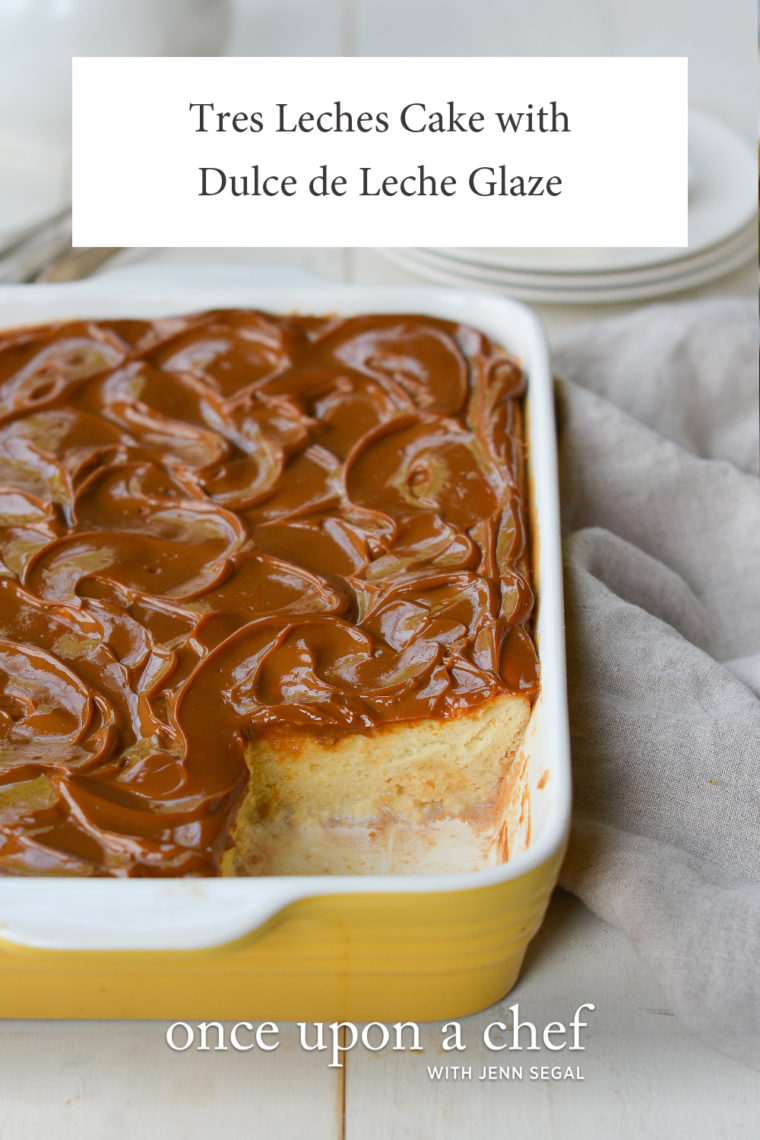
A great recipe. My cake still turned out a little domed on the top, though, so some of the soaking liquid went to the sides and the cake ended up not soaking very evenly, with a dry cake middle. Any suggestions for next time?
Hi Melinda, often times doming on a cake is due to uneven heat distribution in the baking pan. You could try damp cake strips like these – I’ve used them with success for more professional looking cakes. Also, if you spoon the soaking liquid gradually over the cake, you can make sure it distributes more evenly.
I got rave reviews when I first baked this cake! Thanks!
Did you sift the flour before or after you measured?
Hi Jojo, the flour doesn’t need to be sifted here. (Most flours are now pre-sifted.)
Hi, I love the idea of this cake, but unfortunately I am gluten intolerant. If I was to make this with gluten free plain flour, is there any alterations I should do? Add xanthan gum gum? if so any recommendations on how much to add in or any other tips etc? I look forward to trying this recipe as I have made your coconut macaroons recipe many times and love them.
Hi Mia, Im glad you like the meringues! Although I haven’t tried the tres leches this way, I suspect you could use an all purpose gluten-free baking mix instead of the flour. I like this one. I’d love to hear how it turns out if you prepare it!
I also made this with a mix of Bob’s red mill and cup 4 cup flour gf and it was perfect👍🏻
hi. is the oven temperature 325 fan or conventional. trying to convert to UK temperatures.
thanks
Hi Francis, I’m assuming when you say “fan,” that you’re referring to a convection oven. All of my recipes are tested and based on using a conventional oven, not one with a fan. Hope that helps!
thanks for the quick and great reply to my question.
The cake tested good but the milk was only absorbed by the bottom of cake and the upper part was dry although I left it for a night .
That’s strange as this should be so most all the way though. Did you use a 9″ x 13″ pan?
Hi, Jenn
It looks so yummy — I can’t wait to try the recipe. I am going to a party this Fri and I don’t have time to bake the cake on Thurs. is it ok it I bake the cake on Wed and let it soak for 2 night? Thanks!
Helen
Hi Helen, Sure- the cake will keep nicely for up to 3 – 4 days in the fridge. Enjoy!
Dare I ask the calorie count and nutritional info for this lovely recipe?
It’s actually not as bad as you might think :). I just added all the nutritional for it to the recipe.
Calorie count?
Thanks!
Hi Christy, I just added all the nutritional information to the recipe. (Each 2 inch square is 234 calories.) Enjoy!
Hands down the BEST Tres Leches cake ever! Have made it many times and it is always perfect. I follow the recipe exactly and have received more compliments than I can count. Thank you, thank you, thank you!